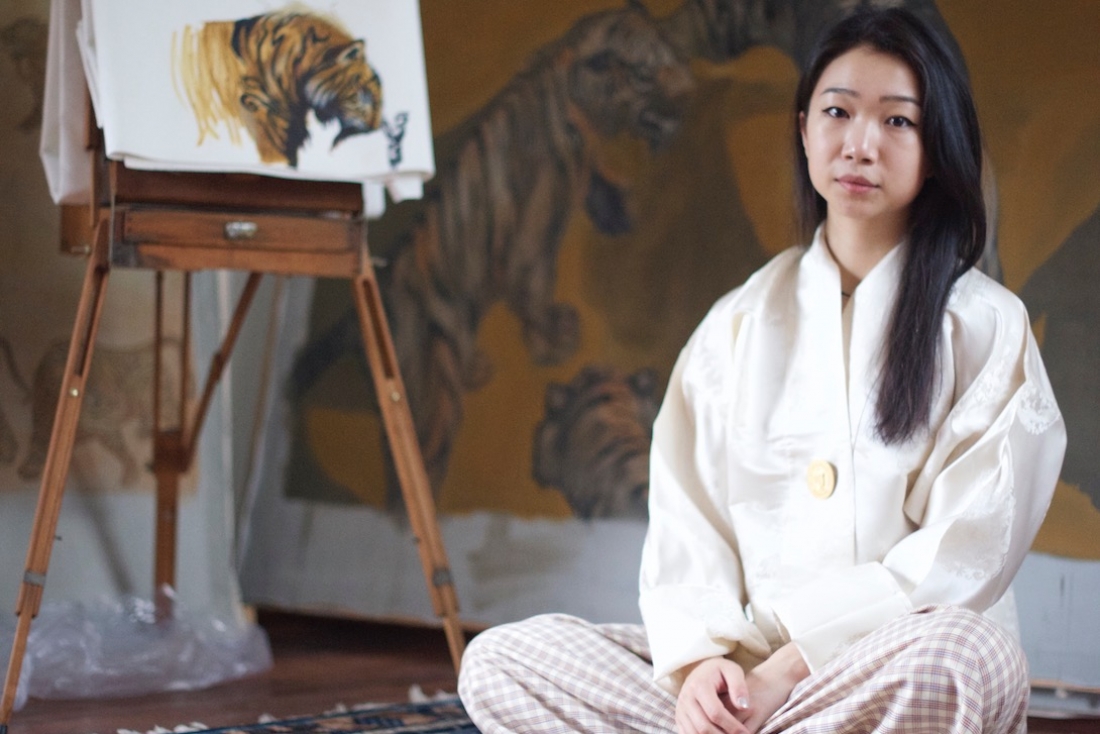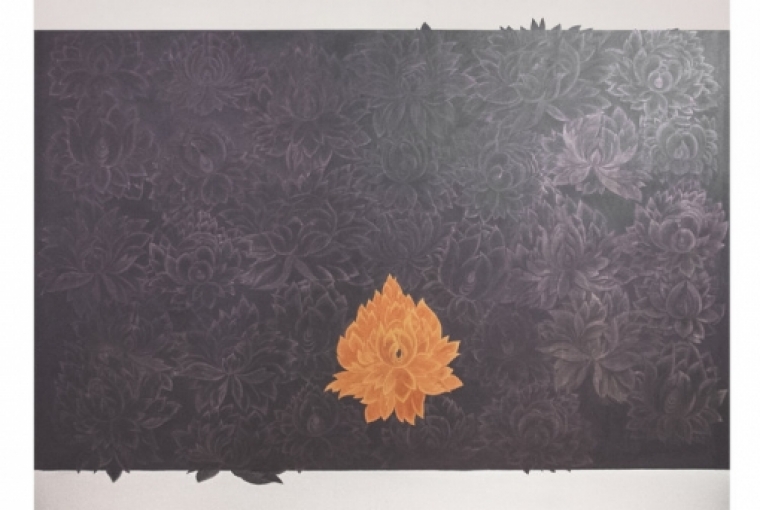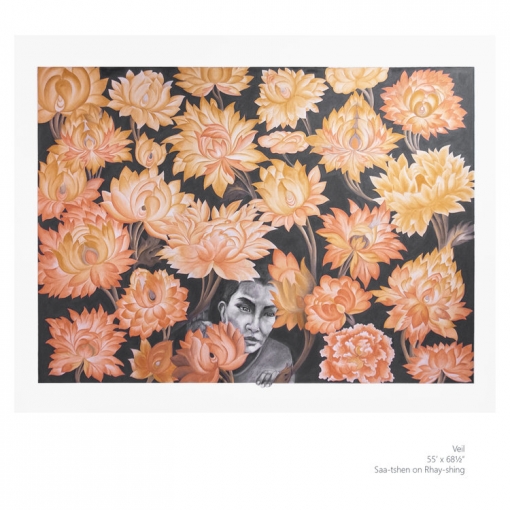

When did your romance with art begin?
I think my relationship with art started off as more of an affair than a romance. Growing up in Bhutan I was surrounded by brilliantly creative people, but it was just something they also did, a hobby. So going into college I had decided on majoring in economics. Art wasn’t something I saw myself committing to as a career, but it turned out it wasn't something I could stop either, so I took one art class my first semester in college. Then another, then another, until I thought since I had enough credits might as well major in art as well. Even then I don't think I realized that art would be it for me. There wasn’t this moment where I decided that I would pursue art as a career, I think it was just a series of steps that led me to where I am today, or as my mom would say it was destiny leading me by the nose.
What inspires you as an artist?
A number of things inspire my work. They are usually my questions, observations, cautions I have. Usually its about people. The people in my life, the ones around it and even the ones in my head! Also Society, and the way the two interact and how they affect one another.
My culture is a great source of inspiration for me, but for a while I tried to cut it off from my art. I thought doing so would give me a chance to be a ‘real artist’ and not be a Bhutanese novelty. It wasn’t until after college when I was back in Bhutan that I realized what an essential part of myself I was cutting off by denying that part of me. It is still something I am mindful of in my work but I allow my culture to pass through my eyes and my experiences and onto the canvas.
And finally but most importantly my parents. Whose encouragement and support allowed me the freedom to paint with my heart and my truth, without fear of being homeless and hungry.

Faces, was the first female solo exhibition in Bhutan, how was it received and how have you evolved as an artist since then?
“Faces” was also my first solo exhibition. It took place at the Royal Textile Academy in August 2015. The paintings were variations of the three eyed Mahayana Mask, illustrating the metaphoric masks we wear and how we use them as a means of protection.I remember the most common observations from artists was the scale of my works and the professional presentation of the pieces. I’m not sure how fair a judge I’d be as assessing the success of my show, but I would like to think it was received quite well. Its strange to think its only been three years as I feel the evolution of my work from Faces to Found Icons has been significant. Not just visually, but in the process and what the works are trying to say, I feel that I am more free and confident in the pieces I create.

What is the Art scenario in Bhutan like currently?
With the great fore sight of our Kings our traditional arts have been preserved and are in practice to this day. With the School of 13 arts (Zorig Chusum) grooming and educating students the traditional art scene in Bhutan is thriving. The contemporary art scene in Bhutan however is fairly new, and slowly growing. I believe we have many talented artists, but we lack many key components for art to truly take off like galleries, critics, curators, auction houses…etc, Artists or friends and family of artists are usually forced to fill out these roles and with little to no experience and knowledge makes it more challenging to break into the art world.
Can you tell us a little about the artworks you are showing at Nature Morte?
There are usually layered themes in the my collections. The works that are currently showing at Nature Morte are a part of a series titled “Found Icons”. The inspiration came from found objects or readymades. Found objects is art created from everyday, but often modified, objects or products that are not normally considered materials from which art is made, often because they already have a non-art function. I am fascinated by how we can completely transform and change an object or image through setting and context. By changing the perspective in which we look at the object we can transform the everyday object into a piece of art.
Like Found objects, found icons takes preexisting images from traditional Bhutanese art and presents them in a way that creates a new conversation. It gives the audience a stage to consider how the re-presentation of the icons creates a scenario reflecting society and its behavior. The use of traditional Bhutanese icons are ideal for this as they are singular in their uses much like the generally (intended) singular functions of everyday objects. They are Structured and recreated with such precision and lack of variation like mass produced objects.
The individual works have their own story to tell as well. After my first exhibition I allowed myself the freedom to not restrict myself to a singular story line. I want my viewer to connect and interpret the work themselves, but I like to give them a place to start. So the works are accompanied by short usually, but not always ambiguous statements or questions.
What is in store for you for the remaining year and 2019?
Honestly, I’m not sure. I’ll just keep painting, creating and learning. Work hard and allow destiny to lead me by the nose.
TEXT Shruti Kapur Malhotra